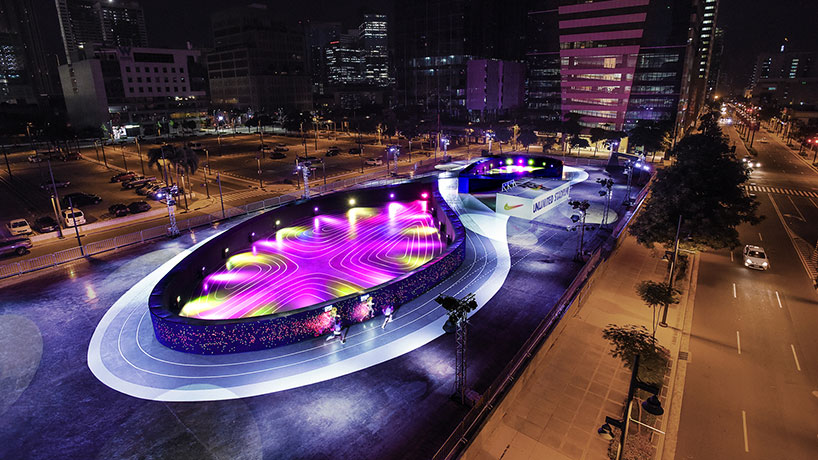//Selina Lee
//Section C
//selinal@andrew.cmu.edu
//Project 02
var nosesi = 75 //size of nose
var noseco = 40 //R value for nose
var noseco2 = 120 //G value for nose
var glintx = 210 //x-location for glint
var glinty = 190 //y for glint
function setup() {
createCanvas(640, 480);
background(200);
}
function draw() {
//create facial surface
stroke(0);
strokeWeight(3);
fill(230, 80, 160);
ellipse(320, 240, 440, 330);
//creating parameters for the smile
var lipx = constrain(mouseX, 130, 220); //defining the interactive limits of the mouse location
var lipy = constrain(mouseY, 250, 320);
//creating the mouth
noFill();
stroke(0);
strokeWeight(1);
beginShape();
curveVertex(lipx, lipy);
curveVertex(lipx, lipy);
curveVertex(width/2 - lipx/2, lipy + 50);
curveVertex(width/2 + lipx/2, lipy + 50);
curveVertex(width - lipx, lipy);
curveVertex(width - lipx, lipy);
endShape();
//creating the nose
fill(noseco, noseco2, 130);
stroke(0);
strokeWeight(1);
ellipse(320 , 240, nosesi, nosesi/2);
//defining eyebrow raise and parameters
var eyebroy = constrain(mouseY, 120, 170);
stroke(150, 100, 100);
strokeWeight(10);
line(160, 180, 250, eyebroy); //left brow
line(480, 180, 390, eyebroy); //right brow
//creating blinking eyes
var pupil = random(20, 35);
stroke(0);
fill(0);
ellipse(200, 190, pupil, pupil); //left eye
ellipse(440, 190, pupil, pupil); //right eye
strokeWeight(0);
fill(255);
ellipse(glintx, glinty, 10, 10); //left eyeglint
fill(255);
ellipse(width - glintx, glinty, 10, 10); //right eyeglint
}
function mousePressed() {
nosesi = random (20, 130); //nose width
noseco = random (0, 250); //value of R for nose
noseco2 = random (110, 130); //value of G for nose
glintx = random (180, 220); //random placement of white eyeglint ellipeses on x-axis
glinty = random (180, 200); //random placement of eyeglint on y-axis
}Author: Selina Lee
Looking-Outwards-02
https://www.quayola.com/sculpture-factory/
The Scultpure Factory; Quayola; 2016

The Sculpture Factory by Quayola is a showing of digital fabrication as different finishes of a 3D scanned sculpture are milled out in foam by a robot. By arranging the six unfinished trial sculptures for reference comparisons, Quayola creates a “hybrid vision – a slow process of discovery not focused on the original figure but on the infinite possibilities of how to reach it” (Quayola).


What I know about the algorithm Quayola uses for the robot is that its outcome is to refine overtime. The first sculpture, for example, uses the main, block shapes to punch out connected mountains of form, and smaller, more defined tools will detail the indentations on these mountains more, working with a large shape and finishing at the top also. The last mill moves linearly to erase the harsh steps of these mountains and create definition.
selinal-Project-01
//Selina Lee
//selinal@andrew.cmu.edu
//Project 01
function setup() {
createCanvas(600,600); //yellow background
background(250,250,120);
//create hair and face
strokeWeight(0); //hair
fill(50,50,30);
arc(300,225,250,175,PI,TWO_PI);
strokeWeight(0);
fill(50,50,30);
rect(175,225,250,250);
strokeWeight(0); //neck
fill(210,180,160);
rect(260,350,80,140);
strokeWeight(0); //green shirt
fill(140,200,180);
arc(190,570,200,200,HALF_PI,PI+HALF_PI);
strokeWeight(0);
fill(140,200,180);
arc(410,570,200,200,PI+HALF_PI,HALF_PI);
strokeWeight(0);
fill(140,200,180);
rect(190,470,220,300);
strokeWeight(0); //chest
fill(210,180,160);
arc(300,470,220,50,TWO_PI,PI);
strokeWeight(0); //face
fill(210,180,160);
ellipse(300,300,210,260);
stroke(90,80,50); //left brown eye
strokeWeight(7);
fill(0);
ellipse(260,275,22,22);
stroke(90,80,50); //right brown eye
strokeWeight(7);
fill(0);
ellipse(340,275,22,22);
stroke(220,150,160); //mouth
strokeWeight(5);
fill(0);
arc(300,335,100,100,TWO_PI,PI);
strokeWeight(0); //tongue
fill(220,140,150);
rect(275,335,50,50);
strokeWeight(0);
fill(220,140,150);
arc(300,385,50,50,TWO_PI,PI);
strokeWeight(0); //teeth
fill(256);
arc(300,335,60,30,TWO_PI,PI);
strokeWeight(0); //left eyebrow
fill(50,50,30);
quad(240,240,250,250,280,252,285,242);
strokeWeight(0);
fill(50,50,30);
triangle(240,240,250,250,220,255);
strokeWeight(0); //right eyebrow
fill(50,50,30);
quad(360,240,350,250,320,252,315,242);
strokeWeight(0);
fill(50,50,30);
triangle(360,240,350,250,380,255);
stroke(0); //nose
strokeWeight(1);
noFill();
arc(300,310,20,15,TWO_PI,PI);
stroke(50,50,30); //brown hair strand
strokeWeight(5);
bezier(300,170,200,200,270,280,200,300);
}
function draw() {
if (millis() > 2000) {
osc.stop();
noLoop();
}
}
Looking Outwards-01
Nike recently built a running stadium in Singapore where participants on the track ran next to an LED wall. After one lap, a digital avatar of the participant’s body from the previous lap is shown and the participant can run against the same pace or try and beat it. What I admire about this project is the interdisciplinary approach to designing and configuring the abstract concept of racing against and trying to beat one’s best self. This was a large-scale project with the key members being a creative director, creative technologist, art director, and tech and building teams. Aste Gutierrez is credited with the idea and creation of what this project is known as, the Nike Unlimited Stadium. A radio-frequency identification software was designed and personalized for the project which allowed for the tracking of each individual on each step on each lap. I see this project as a catalyst to combine the worlds of virtual gaming and physical gaming where the negative characteristics of both are taken away.

Looking Outwards Draft
Hey Y’all
![[OLD FALL 2017] 15-104 • Introduction to Computing for Creative Practice](../../../../wp-content/uploads/2020/08/stop-banner.png)